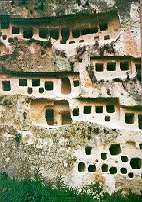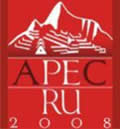United Kingdom
| Welcome |
| Peru in Brief |
| History |
| Geography |
| Government & Politics |
| Maritime delimitation between Peru and Chile |
| News |
Links |
| CAJAMARCA | |||
 |
|||
| Otuzco | |||
| Capital: | Cajamarca | ||
| Elevation: |
2750 m | ||
| Climate: |
Dry and mild; mostly sunny during the day and cold at night. Annual mean temperature: 13.2°C; average high: 21.4°C; average low: 5°C. Wet season: December through March. |
||
| History: |
Settlements date back to pre-Inca times. The valley takes its name from the Caxamarca, a unique culture which flourished between A.D. 500 and 1000. Cajamarca was later a part of the Cuismango kingdom. The land's conquest by the Incas and its incorporation into the Tahuantisuyo empire was accomplished by Capac Yupanqui around 1465 during the reign of his brother, Pachacutec. Under the Incas, Cajamarca became an all-important military, religious and administrative centre. Among its former temples and palaces, the best-preserved is the so-called Ransom Chamber. It was in Cajamarca that, by capturing Atahualpa on November 16, 1532 , Francisco Pizarro effectively put an end to the Inca empire. |
||
Cajamarca lacks an official Spanish founding date. The town took on importance within the colony as mining activities in Hualgayoc were developed. Only in 1802 did a royal decree recognise it as a "City". The oldest and central quarters reflect the canons of Spanish colonial town planning and architecture. Laid out in grid format, buildings are typically two-storey structures with twin-slope tile roofs. Many houses feature elaborate stone porticoes. These and religious buildings ranging from the mid-17th to the early 18 th century form a significant part of Cajamarca's cultural heritage and tourist appeal. |
|||
| Places of Interest: | The Ransom Chamber – the Cathedral – San Francisco – Belen – Santa Apolonia – Tres Molinos – the Otuzco necropolis – Colipa – Llacanora – Callacpuma caves – Banos del Inca – Los Frailones – El |
||
| Santuario – the Pariamarca canal – Aylambo – Huambocancha – the Combayo necropolis – Namora – Collor – San Nicolas – Magdalena – Kuntur Wasi – San Pablo. | |||
The Cathedral. Built in the 17th century and initially known as the Parroquia Espanola (Spanish parish), Cajamarca's holiest shrine presents an impressive front, entirely sculpted in volcanic rock. Inside, the main altarpiece and gilded pulpit deserve close attention. |
|||
The Otuzco Necropolis. This is a pre-Inca burial site with tombs carved in the mountain rock. The "tunnel" and the Tambo de Miraflores are within brief walking distance. Banos del Inca. The Inca ruler Atahualpa was here when the Spaniards arrived in Cajamarca. The most renowned spa in northern Peru features Pozo del Inca and Los Perolitos , a spring where water gushes hotter than 70°C. |
|||
| <BACK> | |||





